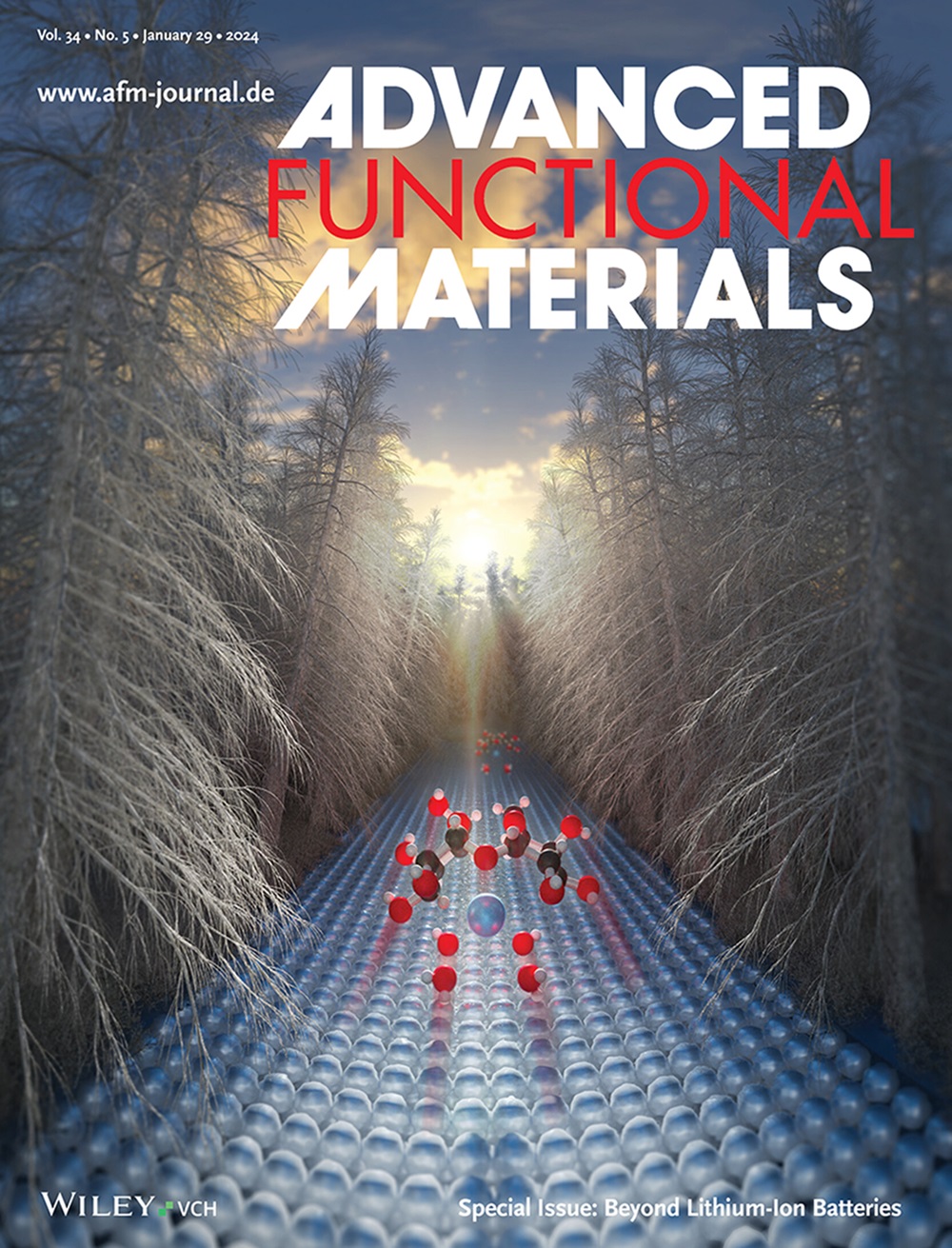High Self-Supporting Chitosan-Based Hydrogel Ink for In Situ 3D Printed Diabetic Wound Dressing
IF 18.5
1区 材料科学
Q1 CHEMISTRY, MULTIDISCIPLINARY
引用次数: 0
Abstract
Customizable 3D-printed biopolymer hydrogels, highly sought after for diabetic wound management, face challenges in clinical application due to weak physical crosslinking within their constituent inks. In this study, a novel chitosan-based hydrogel ink with a dense yet reversible physical crosslinking network is subtly designed for the rapid in situ fabrication of personalized diabetic wound dressing. This robust network is established through multiple electrostatic and hydrogen bonding interactions between unique carboxymethyl chitosan and nanoclay, further reinforced by the introduction of amide bonds, which act as double hydrogen bond donors/acceptors. Benefiting from this network, the ink with low nanoclay content exhibits remarkable self-supporting properties, enabling high-fidelity, large-scale, and complex 3D printability without additional processing, while substantially retaining its inherent rheological properties after autoclave sterilization and the incorporation of active components. Given these advantages, this multifunctional 3D printable hydrogel can be rapidly in situ constructed on diabetic wounds. Simultaneously, the 3D-printed hydrogel demonstrates biodegradability, anti-swelling, and appropriate mechanical properties, along with remarkable in vitro antibacterial and pro-angiogenic capabilities, leading to effective diabetic wound healing in vivo. This work offers a new strategy for creating highly self-supporting biopolymer inks and paves the way for developing advanced personalized wound dressings.

用于原位 3D 打印糖尿病伤口敷料的高自支撑壳聚糖水凝胶墨水
可定制的三维打印生物聚合物水凝胶在糖尿病伤口管理方面备受青睐,但由于其组成墨水的物理交联性较弱,因此在临床应用中面临挑战。本研究巧妙地设计了一种新型壳聚糖基水凝胶墨水,这种墨水具有致密但可逆的物理交联网络,可用于快速原位制造个性化糖尿病伤口敷料。这种牢固的网络是通过独特的羧甲基壳聚糖和纳米粘土之间的多重静电和氢键相互作用建立起来的,并通过引入酰胺键作为双氢键供体/受体得到进一步加强。得益于这种网络,纳米粘土含量低的油墨表现出显著的自支撑特性,无需额外加工即可实现高保真、大规模和复杂的三维打印,同时在高压灭菌和加入活性成分后仍能保持其固有的流变特性。鉴于这些优势,这种可三维打印的多功能水凝胶可在糖尿病伤口上快速原位构建。同时,这种三维打印水凝胶还具有生物可降解性、抗肿胀性和适当的机械性能,以及显著的体外抗菌和促血管生成能力,从而在体内实现有效的糖尿病伤口愈合。这项工作为创造高度自支撑生物聚合物墨水提供了一种新策略,并为开发先进的个性化伤口敷料铺平了道路。
本文章由计算机程序翻译,如有差异,请以英文原文为准。
求助全文
约1分钟内获得全文
求助全文
来源期刊

Advanced Functional Materials
工程技术-材料科学:综合
CiteScore
29.50
自引率
4.20%
发文量
2086
审稿时长
2.1 months
期刊介绍:
Firmly established as a top-tier materials science journal, Advanced Functional Materials reports breakthrough research in all aspects of materials science, including nanotechnology, chemistry, physics, and biology every week.
Advanced Functional Materials is known for its rapid and fair peer review, quality content, and high impact, making it the first choice of the international materials science community.
 求助内容:
求助内容: 应助结果提醒方式:
应助结果提醒方式:


